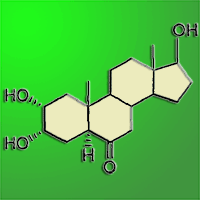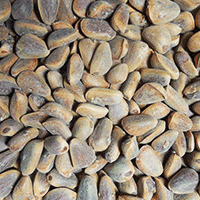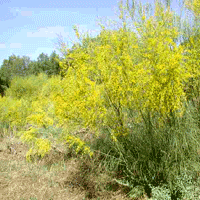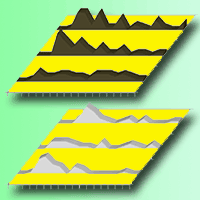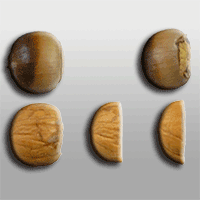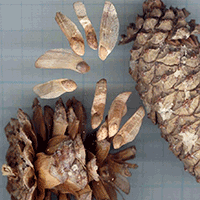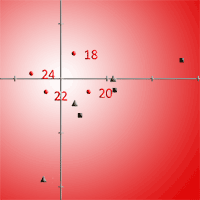
Allelopathic effects of dominant ground vegetation species on initial growth of Pinus sylvestris L. seedlings in response to different temperature scenarios
Vaida Sirgedaite-Šežiene (1) , Ligita Baležentiene (2), Iveta Varnagiryte-Kabašinskiene (1), Vidas Stakenas (1), Virgilijus Baliuckas (1)
iForest - Biogeosciences and Forestry, Volume 12, Issue 1, Pages 132-140 (2019)
doi: https://doi.org/10.3832/ifor2904-012
Published: Feb 27, 2019 - Copyright © 2019 SISEF
Research Articles
Abstract
The dominant species of ground vegetation cover in clear-cuts impact the regeneration of Scots pine forests due to the biochemical properties of these dominant species. Environmental conditions in clear-cuts, specifically increased light and temperature, can alter the biochemical impact of dominant species on subsequent Scots pine regeneration processes. To investigate this, plant species diversity, frequency and cover were estimated in order to identify the dominant species of ground vegetation in clear-cut areas over a two-year period. Afterward, the impact of dominant species extracts on pine seed germination and seedling physiology at different temperature scenarios was evaluated. The species Pleurozium schreberi (Brid.) Mitt., Vaccinium vitis-idaea L. and Calluna vulgaris (L.) Hull were recorded as dominant in 1-yr-old clear-cut areas, and Vaccinium vitis-idaea L., Rumex acetosella L., and Calamagrostis epigejos (L.) Roth were dominant in 2-yr-old clear-cut areas. The prepared aqueous extracts of all dominant species exhibited strong inhibitory effects on pine seed germination and seedling morpho-physiological traits (the length of the radicle and hypocotyl; chlorophyll a, b, a/b and carotenoid content), resulting in the reduction of ex situ pine adaptive capacity at higher air temperature (24°C) compared to that at lower temperature (20°C). Significantly (p<0.05) stronger inhibitory effects of root and shoot extracts produced from all dominant species on chlorophyll a, b and a/b content were recorded at higher temperature (22-24°C) compared to lower (20°C) temperature. A significantly lower content of carotenoids was observed in the control (24°C) temperature. Thus, a high increase of ambient temperature may cause unfavourable conditions for Scots pine seedling growth in boreal forests.
Keywords
Carotenoids, Chlorophylls, Clear-cut, Germination, Plant Extract
Authors’ Info
Authors’ address
Iveta Varnagiryte-Kabašinskiene
Vidas Stakenas
Virgilijus Baliuckas
Institute of Forestry, Lithuanian Research Centre for Agriculture and Forestry, LT-53101 (Lithuania)
Institute of Environment and Ecology, Aleksandras Stulginskis University, LT-53361 (Lithuania)
Corresponding author
Paper Info
Citation
Sirgedaite-Šežiene V, Baležentiene L, Varnagiryte-Kabašinskiene I, Stakenas V, Baliuckas V (2019). Allelopathic effects of dominant ground vegetation species on initial growth of Pinus sylvestris L. seedlings in response to different temperature scenarios. iForest 12: 132-140. - doi: 10.3832/ifor2904-012
Academic Editor
Silvano Fares
Paper history
Received: Jun 25, 2018
Accepted: Dec 28, 2018
First online: Feb 27, 2019
Publication Date: Feb 28, 2019
Publication Time: 2.03 months
Copyright Information
© SISEF - The Italian Society of Silviculture and Forest Ecology 2019
Open Access
This article is distributed under the terms of the Creative Commons Attribution-Non Commercial 4.0 International (https://creativecommons.org/licenses/by-nc/4.0/), which permits unrestricted use, distribution, and reproduction in any medium, provided you give appropriate credit to the original author(s) and the source, provide a link to the Creative Commons license, and indicate if changes were made.
Web Metrics
Breakdown by View Type
Article Usage
Total Article Views: 44818
(from publication date up to now)
Breakdown by View Type
HTML Page Views: 37861
Abstract Page Views: 3205
PDF Downloads: 2912
Citation/Reference Downloads: 4
XML Downloads: 836
Web Metrics
Days since publication: 2483
Overall contacts: 44818
Avg. contacts per week: 126.35
Citation Metrics
Article Citations
Article citations are based on data periodically collected from the Clarivate Web of Science web site
(last update: Mar 2025)
Total number of cites (since 2019): 4
Average cites per year: 0.57
Publication Metrics
by Dimensions ©
Articles citing this article
List of the papers citing this article based on CrossRef Cited-by.
References
The effect of plant stand density on plant leaf area index and content of photosynthetic. Zemdirbyste - Agriculture 95 (4): 97-109.
Gscholar
The phytotoxicity and accumulation of secondary metabolites in Heracleum mantegazzianum (Apiaceae). Allelopathy Journal 33 (2): 267-276.
Gscholar
Biochemical impact of dominant’s of Scots pinewood cutting on germination. Polish Journal of Environmental Studies 19 (1): 35-42.
Gscholar
Allelopathic effects of Xanthium strumarium L. shoots aqueous extracts on germination, seedlings growth and chlorophyll content of lentil (Lens culinaris Medic.). Romanian Biotechnological Letters 15 (3): 5223-5228.
Online | Gscholar
Pflanzensoziologie. Grundzüge der Vegetationskunde. [Plant sociology. Basics of vegetation science] (3rd edn). Springer, Wien, Autsria and New York, USA, pp. 865.
Gscholar
Allelopathic effects of the Brazilian pepper Shinus terebinthifolius on growth, leaf production and biomass of seedlings of the red mangrove Rhizophora mangle and the black mangrove Avicennia germinans. Journal of Experimental Marine Biology and Ecology 357: 149-156.
CrossRef | Gscholar
Interactive effects of allelochemicals and environmental stress. In: “Phytochemical Ecology: Allelochemicals, Mycotoxins and Insect Pheromones and Allomones” (Chou CH, Waller GR eds). Institute of Botany, Academia Sinica Monograph Series, Tapei, Taiwan, vol. 9, pp. 101-118.
Gscholar
Quantification of allelopathic substances and inhibitory potential in root exudates of rice (Oryza sativa) varieties on Barnyardgrass (Echinochloa crus-galli L.). Plant Omics 3: 204-209.
Gscholar
Inhibitory activity of allelochemicals on barnyardgrass (Echinochloa crus-galli L.) seed and seedlings parameters. World Applied Sciences Journal 17 (11): 1535-1540.
Gscholar
ISTA method validation for seed testing. The International Seed Testing Association (ISTA), Bassersdorf, Switzerland, pp. 66.
Gscholar
Forest site types (Vaičys M ed). LUTUTE, Kaunas, Lithuania, pp. 95. [in Lithuanian]
Gscholar
Principles of weed management. Ferdowsi University of Mashhad Publication, Mashhad, Iran, pp. 273-290.
Gscholar
Plant stresses and allelopathy. In: “Allelopathy: Organisms, Processes and Applications” (Inderjit, Dakshini KMM, Einhellig FA eds). American Chemical Symposium Series No. 585. American Chemical Society, Washington, DC, USA, pp. 142-157.
Gscholar
Chlorophyll Letale und der submikroskopishe Formveschsel der Plastiden [Chlorophyll Letale and the submicroscopic form of the plastids]. Experimental Cell Research 12: 427. [in German]
Gscholar
World reference base for soil resources 2014. International soil classification system for naming soils and creating legends for soil maps. World Soil Resources Reports No. 106. FAO, Rome, Italy, pp. 191.
Gscholar



